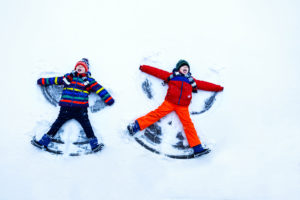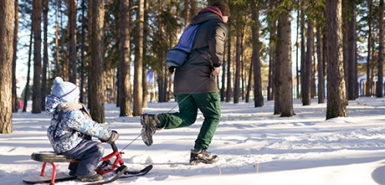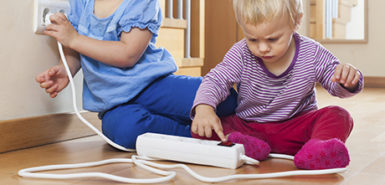
Extreme cold has come to West Michigan and will be a regular visitor this winter.
Parents should take extra precautions when sending young children outdoors for any length of time, and that means learning the warning signs of hypothermia and frostbite.
Parents need to know how to prevent extreme cold weather exposure and be ready to respond appropriately to problems, said Jennifer Hoekstra, an injury prevention program coordinator with Spectrum Health Helen DeVos Children’s Hospital.
“Children don’t realize they can get in trouble quickly when they are out in temperatures close to or below zero,” she said.
Clothing
Problems arise when infants and children are not dressed properly, Hoekstra said. Make sure they’re dressed in several thin layers to stay warm and dry. Adequate outdoor clothing includes thermal long johns, turtlenecks, at least one shirt, pants, sweater, coat, warm socks, boots, gloves or mittens and a hat.
Hypothermia
Hypothermia develops when a child’s temperature falls below normal due to exposure. It often happens when children are outdoors in extremely cold weather without proper clothing or when their clothes get wet. If your child shivers and becomes lethargic and clumsy, hypothermia may be setting in. Your child’s speech also may become slurred.
Call 911 immediately if you suspect your child is hypothermic. Until help arrives, take children indoors, remove any wet clothing and wrap them in blankets or warm clothes.
Frostbite
Frostbite happens when the skin and outer tissues become frozen. This condition tends to happen on extremities like the fingers, toes, ears and nose. Watch for extremities that may become pale, gray and blistered. Children may complain that their skin burns or has become numb.
Here’s what to do if your children show signs of frostbite:
- Bring children indoors and place the frostbitten parts of their bodies in warm water.
- Apply warm washcloths to frostbitten noses, ears and lips.
- Do not rub the frozen areas or use a heating pad.
- After a few minutes, dry and cover children with clothing or blankets.
- Give them something warm to drink.
- If the numbness continues for more than a few minutes, call your doctor.
When the temperatures drop low, “the best advice is to keep your children inside and busy with indoor activities,” Hoekstra said. Same goes for your furbabies, too.
 /a>
/a>
 /a>
/a>
 /a>
/a>